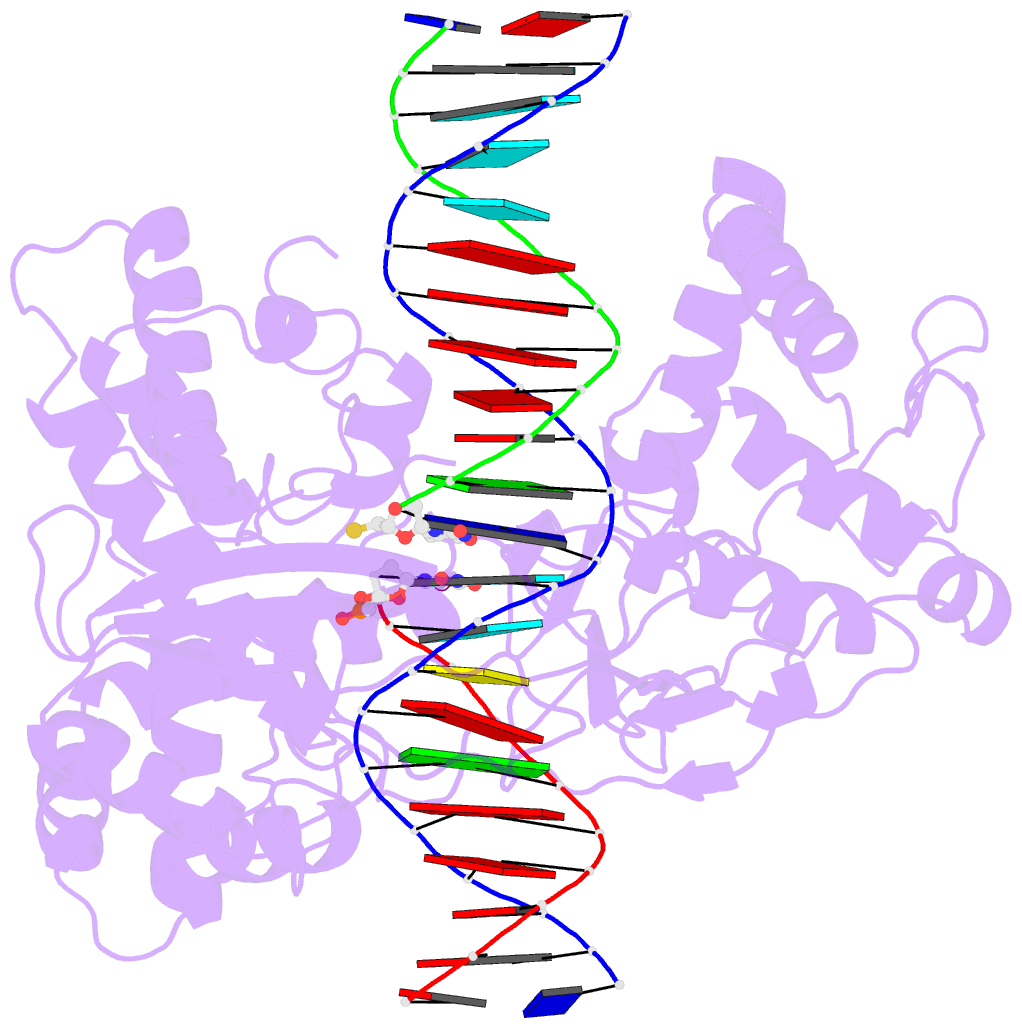Summary information and primary citation
- PDB-id
- 1k4s; SNAP-derived features in text and JSON formats;
DNAproDB
- Class
- isomerase-DNA
- Method
- X-ray (3.2 Å)
- Summary
- Human DNA topoisomerase i in covalent complex with a 22 base pair DNA duplex
- Reference
- Staker BL, Hjerrild K, Feese MD, Behnke CA, Burgin Jr AB, Stewart LJ (2002): "The mechanism of topoisomerase I poisoning by a camptothecin analog." Proc.Natl.Acad.Sci.USA, 99, 15387-15392. doi: 10.1073/pnas.242259599.
- Abstract
- We report the x-ray crystal structure of human topoisomerase I covalently joined to double-stranded DNA and bound to the clinically approved anticancer agent Topotecan. Topotecan mimics a DNA base pair and binds at the site of DNA cleavage by intercalating between the upstream (-1) and downstream (+1) base pairs. Intercalation displaces the downstream DNA, thus preventing religation of the cleaved strand. By specifically binding to the enzyme-substrate complex, Topotecan acts as an uncompetitive inhibitor. The structure can explain several of the known structure-activity relationships of the camptothecin family of anticancer drugs and suggests that there are at least two classes of mutations that can produce a drug-resistant enzyme. The first class includes changes to residues that contribute to direct interactions with the drug, whereas a second class would alter interactions with the DNA and thereby destabilize the drug-binding site.





